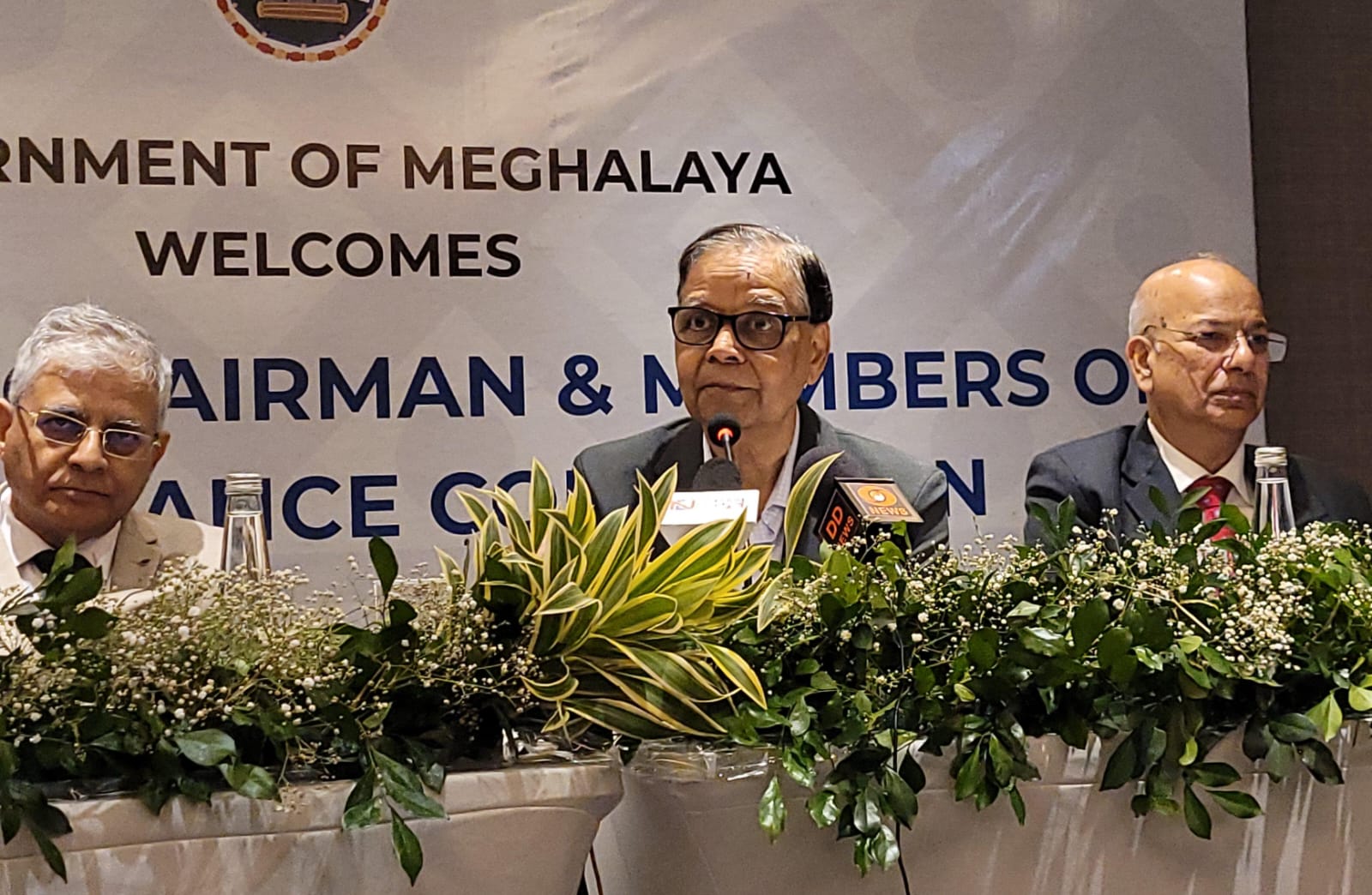Dr. Arvind Panagariya, Chairman of the 16th Finance Commission, shared insights following consultations with eight states, including Meghalaya. A central theme emerging from these discussions is the unified demand for an increase in vertical devolution from the divisible pool, raising it from 41% to 50%. Meghalaya, led by Chief Minister Conrad K. Sangma, submitted proposals worth ₹1.2 lakh crore in grants-in-aid for a five-year period during the commission’s meeting in Shillong on Monday.
“On finance, the main subject for the Finance Commission is devolution,” Dr. Panagariya explained.
“And on that the states pitch was that the vertical devolution to the states from the divisible pool increase from the current 41% to 50%. Now this is, of course, a figure, we have been hearing in state after a state, there is somehow across states there seems to be some consensus that this devolution not to rise from 41 to 50, normally, the finance commission don’t really increase or the change the shares that that dramatically. But in any case for us, it’s an early stage, of work and so we don’t know where that is going to go,” he said.
He further elaborated on the complexity of grants-in-aid, stating, “So those are tricky because currently after the 14th finance commission, the devolution out of central tax revenue is extremely large. So, the central government in, in a way Exercises is discretion, whether it’s from out of its own consolidated of India, whether it’s going to further give grants according to the recommendations of the finance commission or not. So in any case, there’s very large set of proposals given by the government, all together Rs 1.2 lakh crore rupees worth of grant in aid requested over the 5 year period have been made by the Meghalaya Government.”
Discussing horizontal devolution, which divides the states’ share among 28 states, Dr. Panagariya acknowledged Meghalaya’s specific suggestions. The state proposed increasing the weightage on forest cover and ecology from 10% to 15%. Additionally, Meghalaya suggested introducing a new criterion for rural dispersion, advocating for a 2.5% to 5% weight. “This would be a new criterion, as rural dispersion has not been considered by previous finance commissions,” he noted.
The state also recommended maintaining the income distance criterion at 45%, as under the 15th Finance Commission, and proposed allocating a 2.5% weight to the quality of expenditure to promote efficient resource use.
Addressing Meghalaya’s financial health, Dr. Panagariya recognized the state’s reliance on central transfers. “The state’s debt-to-GDP ratio and fiscal deficit are relatively high. The fiscal deficit, at around 3.8%, rises to about 5.5% when including long-term capital grants given as 50-year, interest-free loans, which, though resembling grants, count toward the debt-to-GDP ratio.”
When asked about Meghalaya’s target of achieving a $10 billion GDP by 2028, Dr. Panagariya confirmed the goal’s feasibility. “It’s a doable and achievable target,” he remarked, highlighting the state’s focus on improving per capita income through economic initiatives and prudent fiscal management.
Dr. Panagariya emphasized that the Finance Commission is still in the early consultation phase, having visited eight states so far, including Assam. “We’ve only covered about a quarter of the total 28 states. Naturally, each state has different needs and perspectives, particularly regarding horizontal devolution. Southern states, for example, have expressed very different views,” he observed.
He reiterated that the Commission is far from making final decisions, as consultations with all states and key stakeholders, including the central government, are ongoing. “At this point, we are listening to all the states. It’s still early in the game, and no decisions have been made regarding the final recommendations,” Dr. Panagariya concluded.


